6 Gimmicky Restaurant Chains That Didn’t Age Well And 6 Nostalgic Concepts Worth Remembering
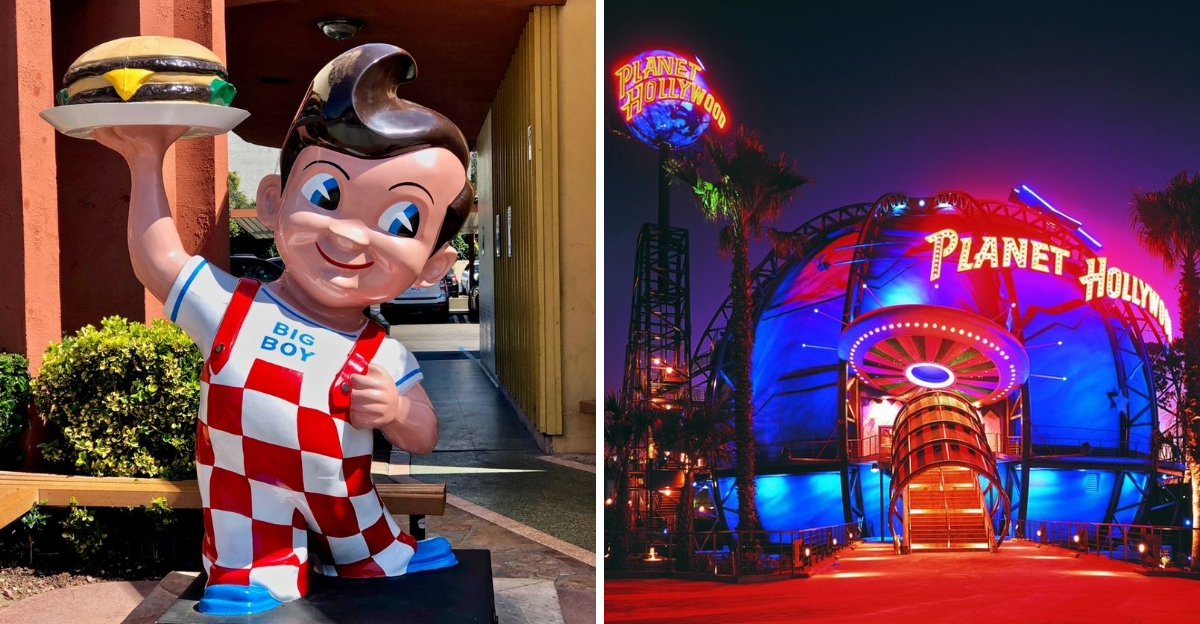
Over the years, many restaurant chains have come and gone, leaving behind memories of both genius concepts and over-the-top gimmicks. While some eateries dazzled with their unique themes, others faded into obscurity, unable to keep up with changing tastes and expectations. In this blog, we’ll take a look at seven gimmicky restaurant chains that didn’t stand the test of time and six nostalgic concepts worth remembering.
Rainforest Café
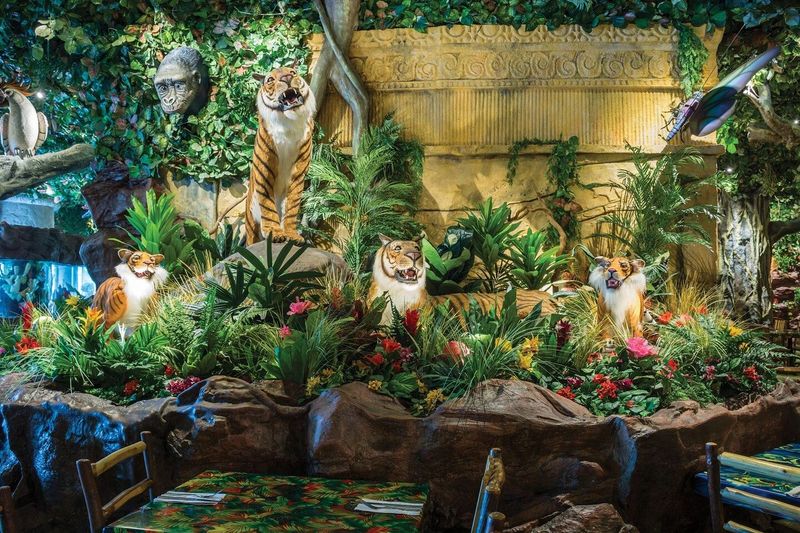
Rainforest Café was once the wild heart of dining, with its animatronic animals and immersive jungle atmosphere. However, the excitement was short-lived as patrons found the food overpriced and the decor dated. What once felt like an adventurous escape became a costly tourist trap. Although the ambiance was designed to transport diners to a lush rainforest, the experience lacked the culinary depth to match the visual spectacle. The once-thrilling thunderstorm sounds and moving gorillas now echo in nostalgia rather than excitement.
Planet Hollywood
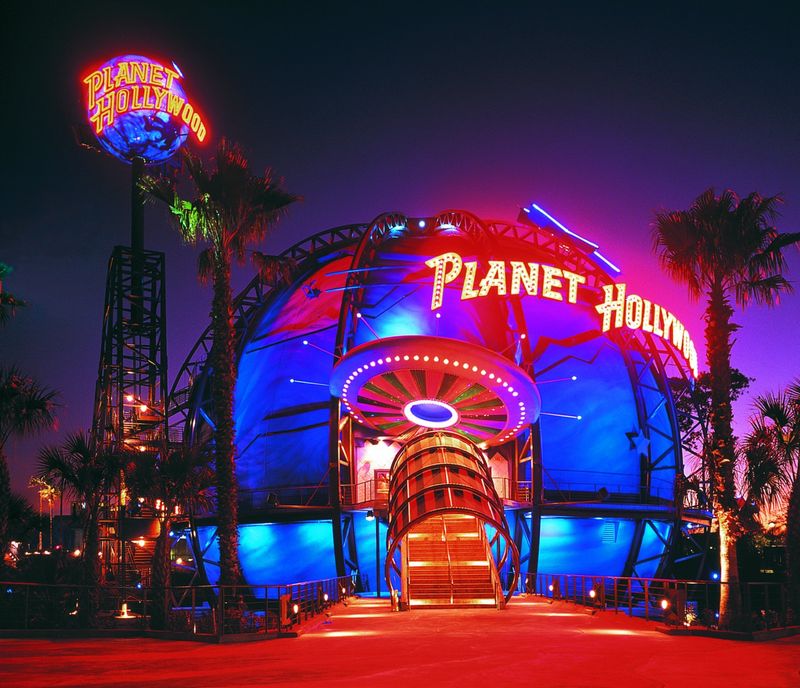
Planet Hollywood promised a red-carpet dining experience with its walls adorned with movie memorabilia and celebrity endorsements. Despite its star-studded appeal, the chain couldn’t sustain its novelty, as diners were left unimpressed by mediocre food. The glitz and glamour faded when the initial charm wore off. Without a substantial menu or consistently great service to back it up, the restaurant struggled to remain relevant. What was meant to be a celebration of Hollywood became a relic of a bygone era.
Mars 2112

Mars 2112 offered diners an intergalactic journey with its space-themed decor and “Martian” waitstaff. While the concept was out of this world, the execution fell flat due to high operational costs and uninspiring food quality. Guests were initially attracted by the novelty of dining on a different planet, but the excitement soon waned. The combination of expensive meals and lackluster cuisine didn’t justify the unique setting. Ultimately, the restaurant’s downfall was its inability to balance imaginative design with satisfying dining.
Medieval Times
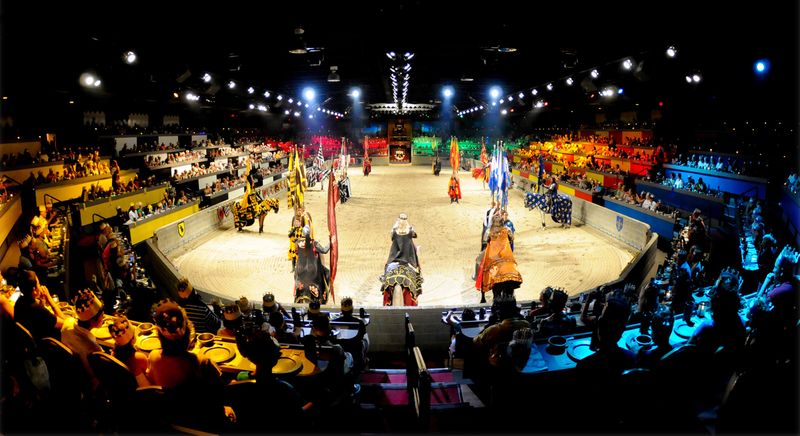
Medieval Times transports guests to an era of knights and jousting, offering a dinner spectacle that feels more tourist attraction than culinary destination. While still operating in select locations, the novelty has worn thin for many. The medieval-themed entertainment captivates initially, but the repetitive format and average food make it less appealing over time. For those seeking historical amusement, it remains a unique experience, yet its lasting power is questioned as modern diners seek more than just spectacle.
Jekyll & Hyde Club
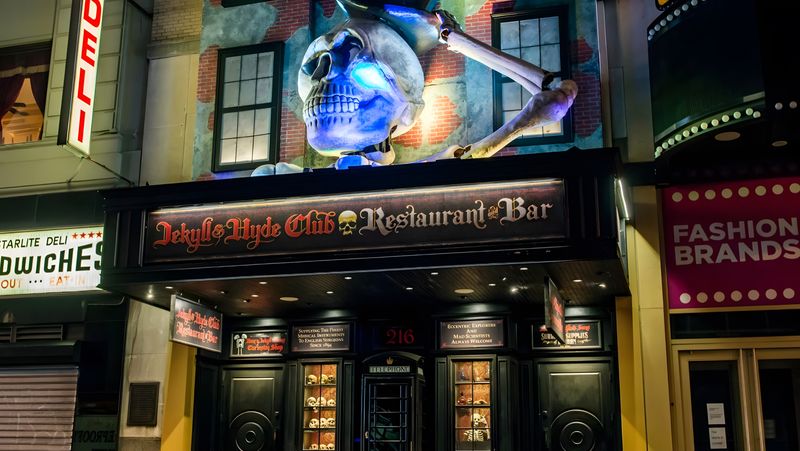
The Jekyll & Hyde Club was a horror-themed wonderland, offering diners a chilling experience complete with spooky decor and eerie theatrics. However, the thrill was dampened by overpriced, subpar food. While the ambiance drew in curious customers, the lack of culinary quality led to its downfall. The theatrical performances, although entertaining, couldn’t mask the disappointment of the dining experience. What was once a thrilling night out turned into a cautionary tale of style over substance.
American Girl Café

American Girl Café centered around the doll experience more than the meal itself, offering a whimsical setting for families and their dolls. While some found it nostalgic, many viewed it as pricey and overly gimmicky. The joy of sharing a meal with dolls created memorable moments, yet the focus on themed dining overshadowed the food quality. For those who cherished the company of an American Girl doll, the café was a charming visit, albeit more for the novelty than the culinary delights.
Howard Johnson’s
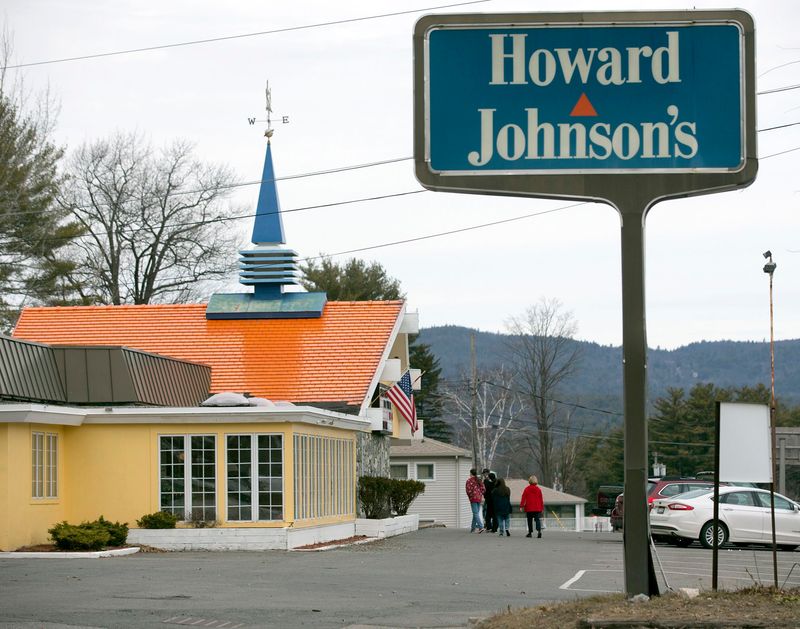
Howard Johnson’s was once the largest restaurant chain in America, famous for its 28 flavors of ice cream, iconic orange roof, and dependable comfort food. Its decline marked the end of an era of simple, reliable dining. Though long gone, the memory of HoJo’s lingers fondly for those who once enjoyed its affordable meals. The chain represented an era when road trips included a stop at these recognizable orange-roofed establishments. Today, Howard Johnson’s stands as a nostalgic relic of mid-20th century Americana.
Burger Chef
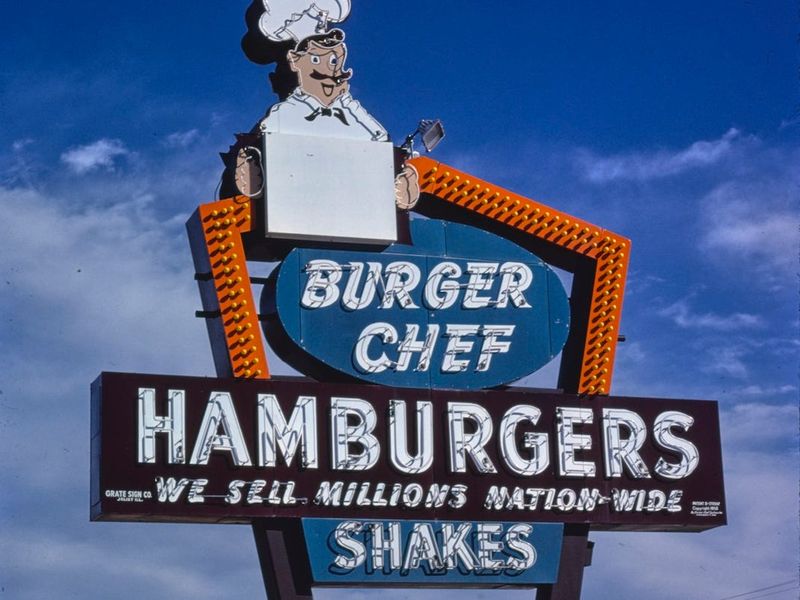
Burger Chef was a fast-food pioneer, introducing the “Funmeal” before McDonald’s had Happy Meals. Its affordability and charm endeared it to families, though it couldn’t compete with larger chains. Despite its disappearance, the fond memories of its innovative meals linger. It was a place where kids found joy in simple pleasures, and parents appreciated the value. Burger Chef’s legacy lives on in the hearts of those who remember the excitement of a visit, offering a nostalgic glimpse into the early days of fast food.
Steak and Ale
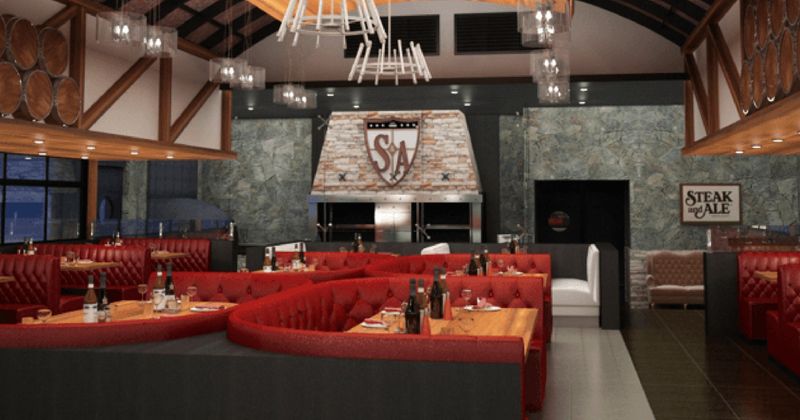
Steak and Ale brought casual, affordable luxury to the middle class with its tablecloth service and legendary prime rib. Its salad bar was a standout, offering a variety of choices in a relaxed setting. Though the chain eventually closed, it left behind warm memories of celebrating special occasions and enjoying hearty meals. Steak and Ale’s approach to dining was both comforting and elegant, making it a cherished spot for many. Today, it is remembered as a pioneer of the casual steakhouse experience.
Pup ’N’ Taco
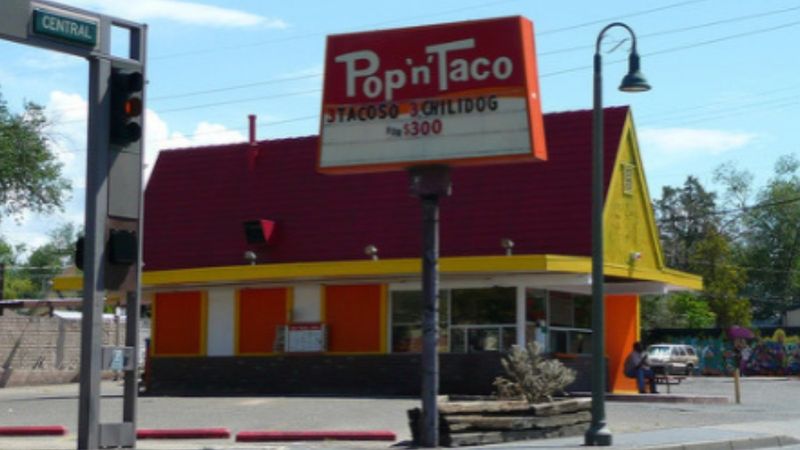
Pup ’N’ Taco offered a quirky blend of tacos, hot dogs, and slushes, earning a loyal following on the West Coast during the ’60s and ’70s. Its unique menu made it a beloved stop for those seeking quick, affordable bites. Despite its eventual closure, the memories of its distinctive offerings persist, reminding patrons of simpler times. The charm of Pup ’N’ Taco lay in its unpretentious approach and eclectic menu, which set it apart from its competitors. Today, it remains a nostalgic memory for those who dined there.
Big Boy
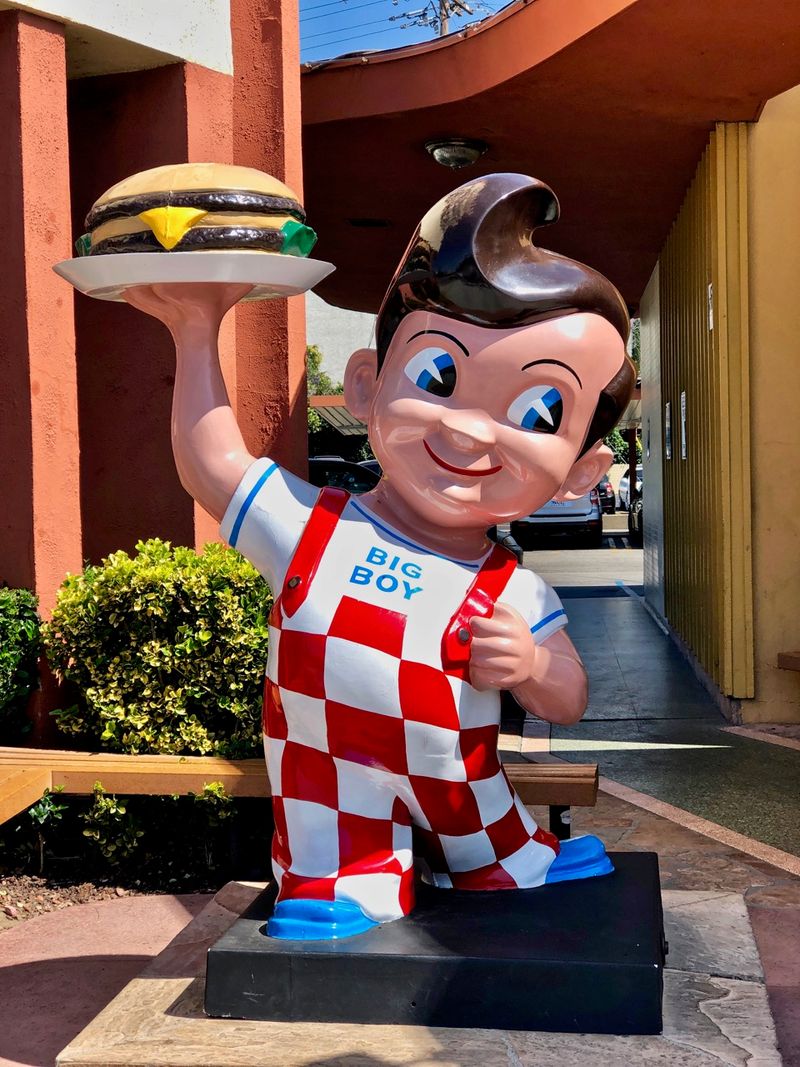
Big Boy, with its iconic double-decker burgers and signature mascot, is a symbol of pure Americana. Although still present in some states, it no longer holds the power it once did. The chain’s nostalgic appeal lies in its classic diner atmosphere and timeless menu. For many, Big Boy represents childhood memories of family meals and friendly service. While it may not dominate the dining scene today, its legacy as a staple of American dining endures, offering a taste of the past to those who seek it.
The Ground Round
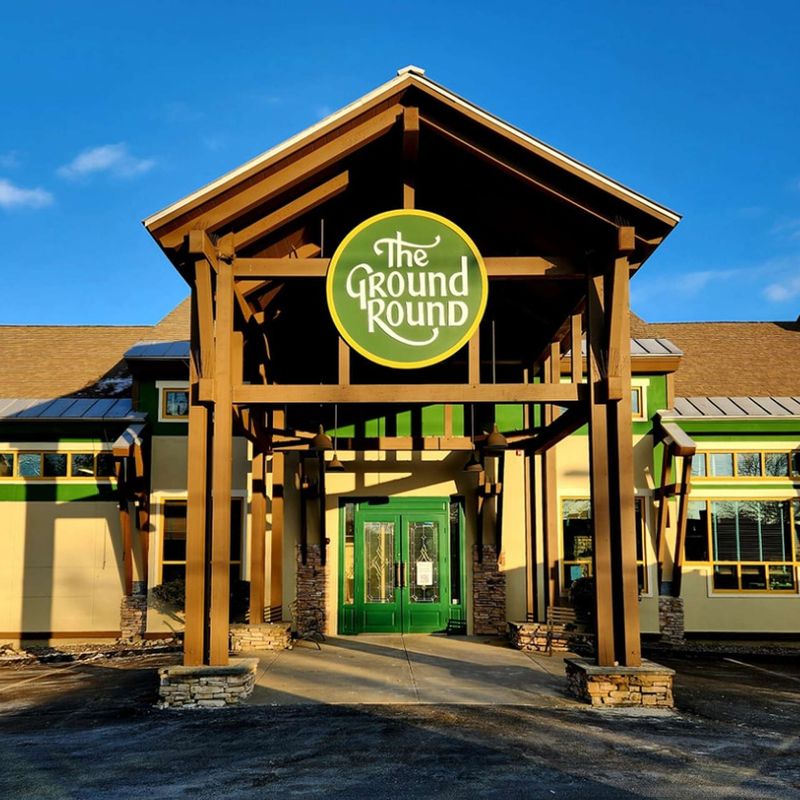
The Ground Round was known for its quirky concept of peanut-shell-covered floors and allowing kids to eat by the pound, making it a delightfully weird family dining spot. While the floors crunched underfoot, the atmosphere was casual and welcoming. Despite its decline, the restaurant holds a place in the hearts of those who enjoyed its unconventional charm. The Ground Round offered a fun, laid-back environment where families could relax and enjoy their meals. Today, it stands as a reminder of creativity in dining concepts.
